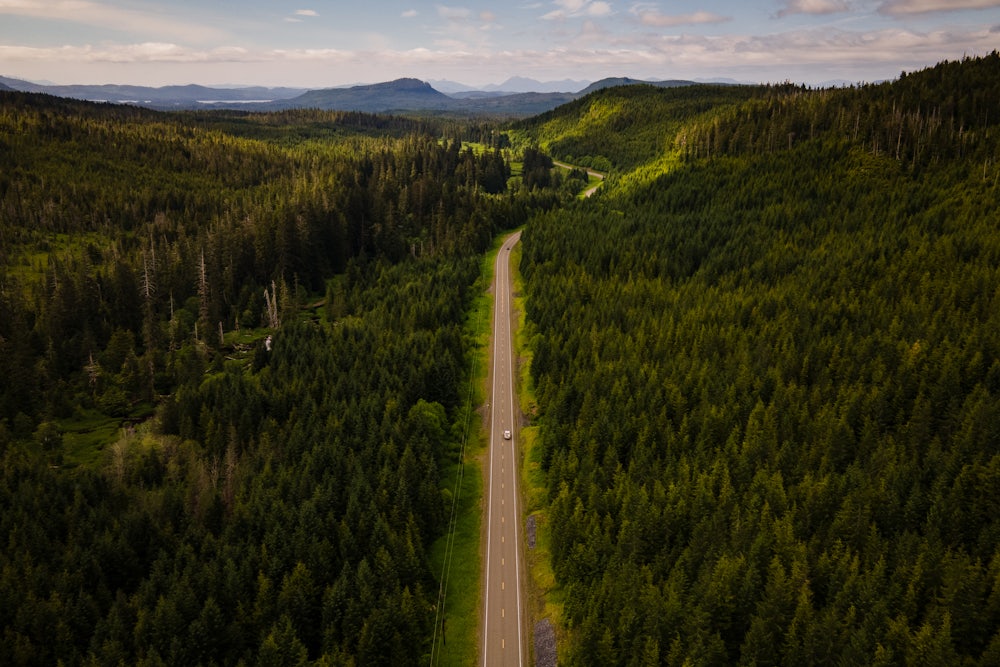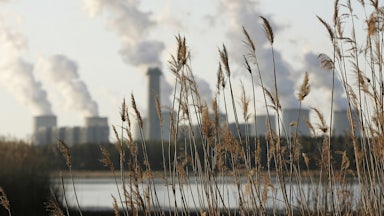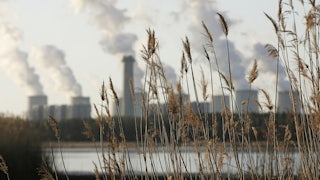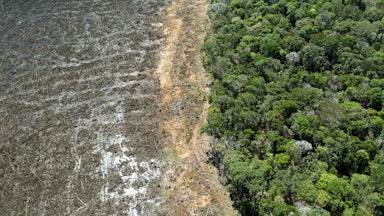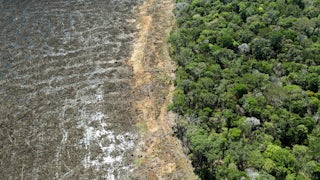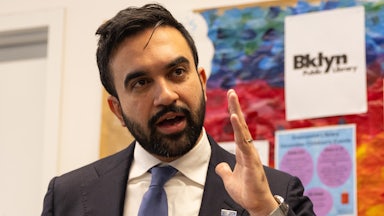When I was in college, I became a moderately talented card magician. Although I’ve lost the ability to do unbelievable things with cards, I kept some knowledge about the dark art of disbelief. Most magic tricks work by presenting a spectacle that contradicts how an audience perceives the basic laws of the universe. A sword swallower, a rabbit pulled from a hat, or a card being drawn at random from a shuffled deck—each poses an irreconcilable challenge to the way we understand the world. It can’t be true; it must be true.
Last month, Alaska became the latest American jurisdiction to stumble headlong into the torrid world of carbon credits, beginning a series of ecological magic tricks meant to astonish audiences for decades to come. The heart of this spectacle is the governor and legislature’s plan to lease state forests to produce carbon offsets—without changing the amount of timber harvested across the state.
Legally speaking, the credits generated from this plan and sold to the highest bidder will be legitimate. Ecologically speaking, Alaska is making itself an accessory to systematic fraud. Barring regulatory action from the federal government, other states might reasonably follow suit.
It’s easy to see how Alaska found itself in this situation. The state stands alone in the United States with no statewide sales tax or income tax; instead, revenue from oil and gas extraction underwrites a substantial share of spending. But falling oil prices over the past year have drained state coffers. Facing a widening budget shortfall, lawmakers began looking for nickels between the couch cushions. Somewhere along the way, the notion of carbon credits made its way to the governor’s office.
“We’ve been told by some that we can generate revenue in the billions [of dollars] over 20 years just from our forest lands,” Republican Governor Mike Dunleavy said in a January press release. And government officials think they can do it without jeopardizing their other revenue streams. According to John Boyle, the incoming commissioner of the state Department of Natural Resources, “Carbon offset projects will not prevent mineral development, timber harvests, new oil or and gas exploration, or infrastructure development.”
The world of carbon markets is predominantly composed of ecological sleights of hand. But even by the low standards of carbon markets generally, Alaska stands out for its open-armed embrace of the contradictions that undermine credibility and endanger climate progress. With the offsets plan, titled Senate Bill 48, Governor Dunleavy metaphorically waved a magic wand and declared that Alaska would sell forest-based carbon offsets without decreasing timber harvests.
In a magic show, this is the moment when the audience gasps—then applauds. The bill sailed through the legislature with broad bipartisan support. One Republican lawmaker, Representative Kevin McCabe, acknowledged that the plan “sounds like voodoo economics,” and then voted for it. Magic.
The basic premise of a carbon offset is simple: Greenhouse gas emissions caused by some activity can be canceled out by “negative” emissions from somewhere else (like planting a tree), leading to net-zero emissions. But a carbon offset is worthless unless it is additional, meaning that it corresponds to a real-world change that causes a reduction in greenhouse gas emissions. For example, a carbon offset that paid vegetarians to reduce their meat consumption is not additional because the vegetarians wouldn’t have consumed meat anyway.
Additionality requires that the money paid to a developer must directly cause an emissions-reducing action, such as planting trees that wouldn’t otherwise be planted or building a wind farm that otherwise wouldn’t be built. Relatively few credits pass stringent, science-based additionality tests. But across the world, developers are selling carbon credits premised on protecting forests that were never at risk of being logged.
“The politics of Alaska made people say the quiet part out loud,” said Freya Chay, a program lead at CarbonPlan, a nonprofit that publishes quant-heavy analyses exposing the shortcomings of carbon markets. “Everybody knows non-additional crediting happens in the voluntary carbon market. It’s very rare that you have multiple parties—project developers, legislators, government officials—promising non-additionality in public processes.”
Alaska has earned its reputation as a political black sheep. The state is home to Lisa Murkowski, one of the U.S. Senate’s most moderate Republicans, and in 2022, voters elected a Democrat, Mary Peltola, as their at-large congresswoman. But in 2023, a conservative coalition took control of the House, upending the status quo among the bipartisan coalitions that had previously governed the state legislature. With Alaska’s legislature divided, anxiety around budget negotiations rose to a fever pitch.
In a moment of political tension, Senate Bill 48 served two critical functions. First, it acted as an olive branch between the divided legislature and the Trump-endorsed governor. And second, it was the budgetary equivalent of a free lunch: a chance for increased revenue that did not raise taxes, cut spending, or impose any meaningful changes to the state’s extractive industries.
“The governor, in particular, is prone to wanting to sell things that I’m not certain that he even understands,” a source close to the legislative process told me of S.B. 48. (They were granted anonymity because they were not authorized to speak to the press.) “The current governor has attracted a lot of grifters.… You’ve got grifters matched up with the people who desperately want to do something green. So it’s a perfect match.”
In a stunning bit of political theater, officials from the Department of Natural Resources, along with a consultant from Anew Climate, a San Francisco–based carbon offset developer, explained the magic trick to an audience of legislators last month. “We don’t expect the carbon offset project to slow timber sales,” a DNR representative told the House Finance Committee. Nobody could articulate how Alaska was going to use its forests to offset carbon emissions while continuing logging at the same rates as before. But that’s how magic works.
In the testimony leading up to the vote last month, Alaska’s legislators didn’t ask tough questions or invite experts like Chay to testify. This was due in part to the desire to play ball with the governor but also because Alaska’s entry into the market for shoddy offsets was arguably in the state’s rational self-interest. Generating offset revenue while continuing logging apace offered a double win. According to Chay, “non-additional crediting would be an ideal outcome for the state, because it would result in carbon income without meaningfully changing or constraining forestry management and timer income.”
I asked Chay what, if anything, will dissuade other states from following Alaska’s example and pursuing their own offsetting programs. She couldn’t say.
“It makes perfect sense for other states to follow suit,” she told me. “And that’s the question: What do we do to make it not make sense anymore?”
Earlier this year, a team of investigative journalists published an analysis in The Guardian showing that more than 90 percent of the rainforest offset credits certified by the industry’s leading standard were “phantom credits”—meaning they did not represent genuine emissions reductions. The problems identified by the researchers are common across the carbon crediting industry, which included setting inappropriate baselines by overstating how many trees would be cut next year.
A report produced last year for the Department of Nature Resources by Anew Climate used rosy numbers to model revenue from forestry-based offset projects in the state. It explicitly described how an inflated baseline using “higher than historic levels” of timber harvesting produces the magic trick that generates phantom credits. Put differently, by intentionally overestimating how many trees would be harvested in future years, “the State can continue its current sustainable [harvest] practices”—and sell carbon credits based on the difference between the inflated estimate and the actual harvest.
“The emperor has no clothes, and the protocols are over-credited,” said Barbara Haya, who directs the UC Berkeley Carbon Trading Program. Senate Bill 48 will make Alaska a participant in the same market that allows claims of carbon neutrality on everything from instant coffee packets to down vests sold at REI.
“Basically,” Haya told me, “companies are paying the Alaska government for the right to say that they are carbon neutral even if they aren’t.”
I asked Joshua Strauss, a senior vice president at Anew who testified at length before the Alaska legislature in April, about these criticisms. “I don’t believe that the baseline was overstated at all,” he told me. “A project’s baseline can easily reflect levels of harvest that are greater than what’s happening right now in a given forest, and as a matter of fact, often the lighter the harvesting is right now, the more likely that it will be harvested more heavily in years to come in a business-as-usual situation.” It’s an elegant catch-22. If today’s rate of harvesting is considered low, future baselines should be set high.
Protecting Alaskan forests and stopping climate change are both ecological imperatives that deserve the attention of the state’s political leaders. But the government’s current plan addresses neither issue; instead, it offers a trickle of potential profit while enriching out-of-state developers and turning a blind eye to a broken industry. The awful irony is that the health of Alaskan wildlands and the stability of the climate both require a more responsible approach to extractive industries, including timber harvesting. As Alaska’s elected officials made clear, that was never on the table.
Before a performance, a magician must decide how to play the part: Do you believe in your own magic and thereby become part of the audience, or do you already know the secret but are unwilling to reveal it? In Alaska, state officials and offset developers chose the former, and in the process became spectators and performers at the same time, like an avant-garde theater production. They sustained the collective illusion so effectively that nobody in the circle of decision-makers publicly asserted that the emperor had no clothes.
And why would they? As Haya explained, “If everyone else has ridiculous baselines and is making all of this money selling these credits, why would Alaska raise its head and say, everyone else can do that, but we’re not going to?” In this case, belief was far more lucrative than doubt.
